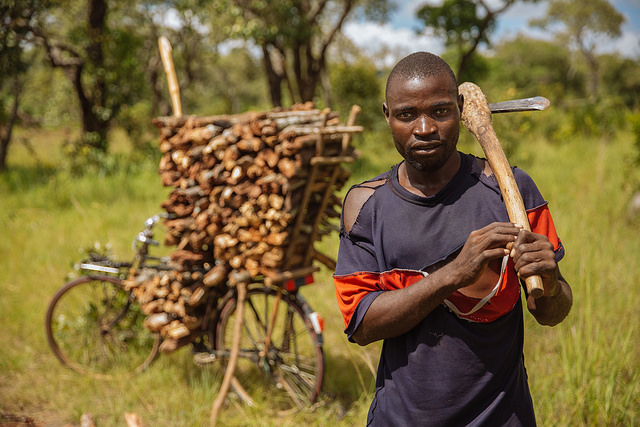Over the past 25 years, many developing countries have experienced rapid economic growth, which has contributed to a dramatic drop, from 37 percent to around 10 percent, in the worldwide extreme poverty headcount. But that growth is now slowing, and that means trouble for the international community’s first Sustainable Development Goal (SDG) of ending poverty in all its forms by 2030.
In a new IFPRI brief funded by the U.N. International Fund for Agricultural Development (IFAD), Senior Research Fellows David Laborde and Will Martin find that the global economic slowdown will potentially leave 38 million more people living in extreme poverty in 2030 than previously projected.
The authors used three different scenarios building on the IMF’s World Economic Outlook projections to see how slower growth will impact poverty, focusing on rural areas, which would be especially hard-hit.
The worst-case scenario estimates that the extreme poverty rate in 2030 will be 5.2 percent, not the 4.8 percent projected without the global economic downturn. This will leave an additional 38 million people still living on less than $1.90 a day, the benchmark for extreme poverty, in 2030.
The poorest countries will be the hardest hit, with an overall net increase in poverty of 3 percentage points compared to the current, more optimistic projection international organizations and countries are using.. Farming households will follow the same trend; while the study projects 2 percent of those will move out of poverty in 2030 even with slackening growth, another 4 percent will fall into poverty, leading to a net increase of 2 percent by 2030.
One consequence of lower economic growth will be sharp declines in prices for minerals and fuels. However, real agricultural prices will rise slightly, as lower productivity and income growth slow down the shift in demand away from food products. While that is good for farmers, higher food prices will place additional burdens on consumers, and falling productivity may reduce net farm income. Again, the hardest-hit will be impoverished consumers, who spend the largest shares of their incomes on food.
Countries projected to see the largest declines in real incomes compared to previous estimates include Brazil (36 percent lower in 2030), China (–31 percent), Russia (–40 percent) and the United States (–20 percent). Other countries likely to be hard-hit include net suppliers of minerals and fuels and those that depend heavily on demand from OECD markets. Nigeria and South Africa see incomes drop relative to the benchmark scenario by 26 and 21 percent, respectively, for example. Fortunately, the outlook for productivity growth appears to have improved in recent years for three key regions—East Africa, West Africa and South Asia outside of India.
Average wages for unskilled labor also fall when overall growth declines, and the study found that in general, regions with declines in real incomes will also see wage declines.
There are some silver linings in the report. Though it projects the extreme poverty rate will be 0.4 percent higher in 2030 than expected, that figure—5.2 percent—still represents a substantial decline from today’s poverty rate of 9.6 percent (according to the latest World Bank and IMF Global Monitoring Report). Poverty is still expected to decline to essentially zero in many countries that currently have large poor populations.
But these new projections do represent a movement away from the SDG-1 goal of eliminating poverty, posing a fresh challenge to policymakers around the world.
It is also troubling that the poorest countries will be hardest-hit, with more than 5 percent of their populations continuing to live below the poverty line in 2030, and poverty rates remaining above 30 percent in a number of low-income countries. This persistence of poverty under a business-as-usual scenario means that meeting the first SDG and completely eliminating poverty by 2030 will require increased focus on policies to speed poverty reduction and assist the poorest households.
Sara Gustafson is a Communications Specialist with the Markets, Trade, and Institutions Division at IFPRI.







